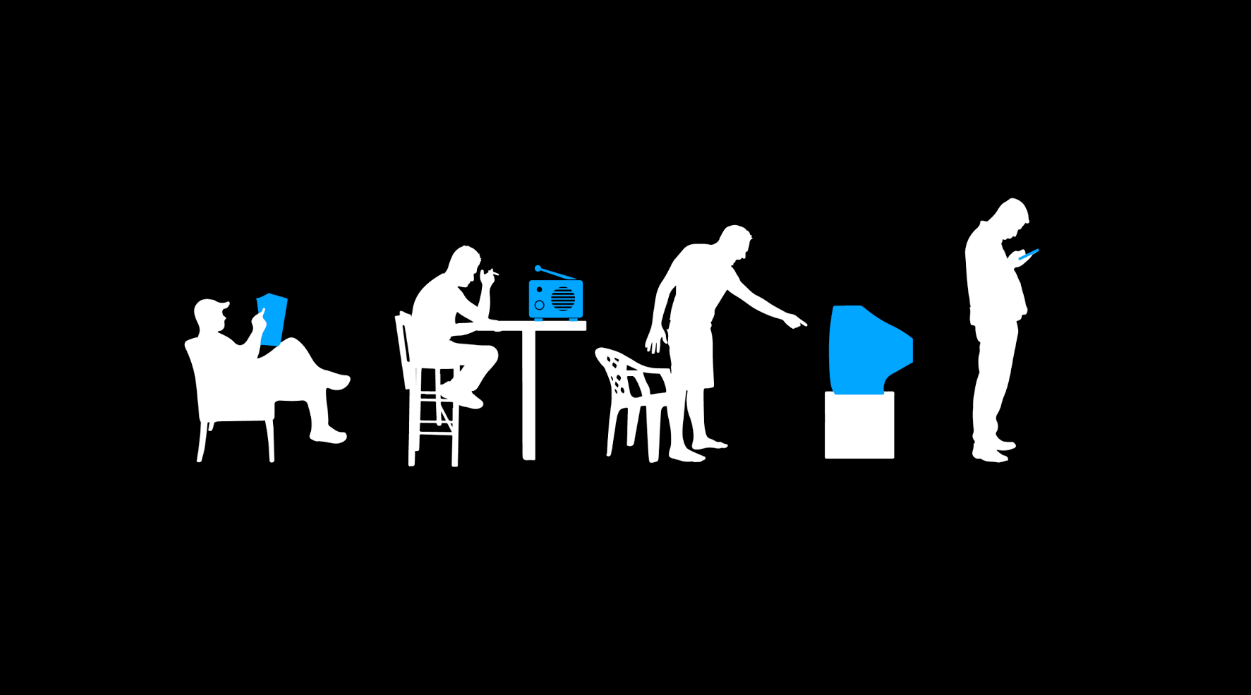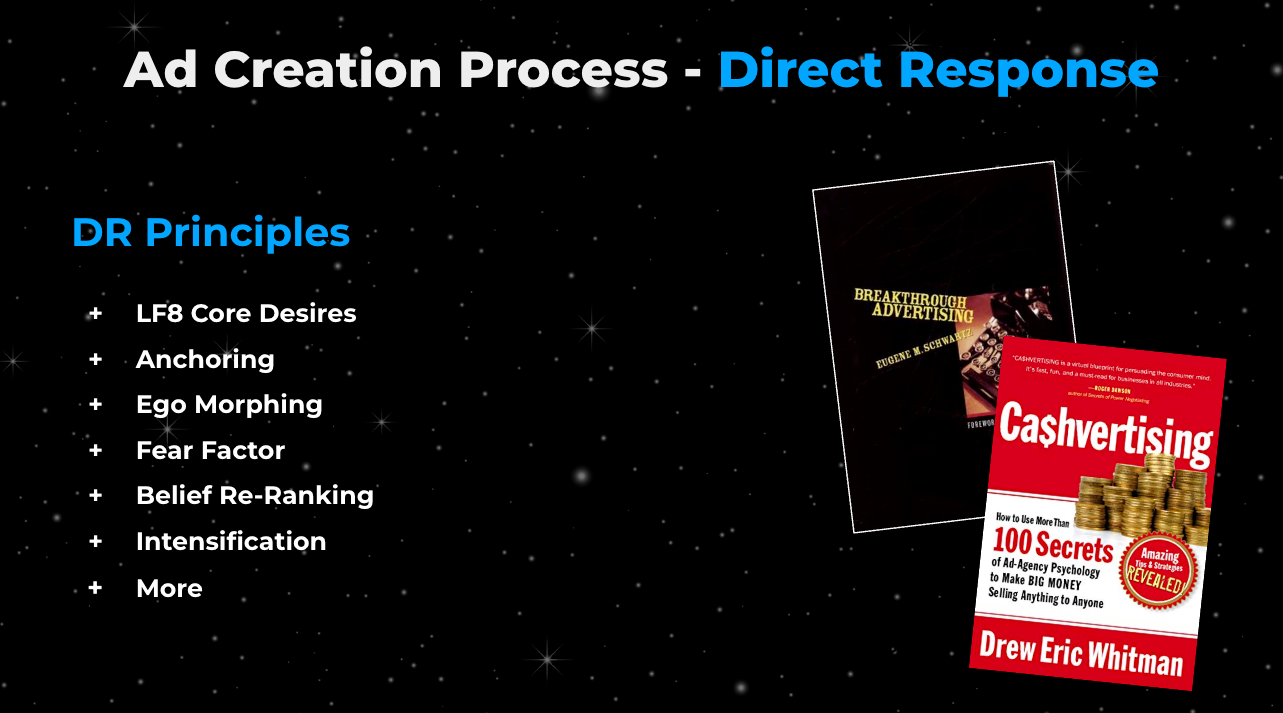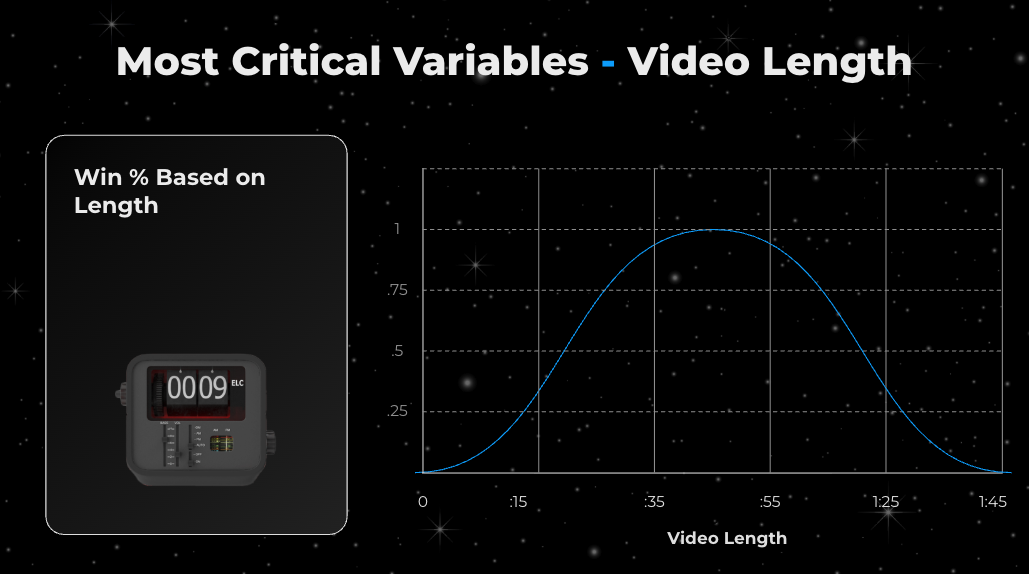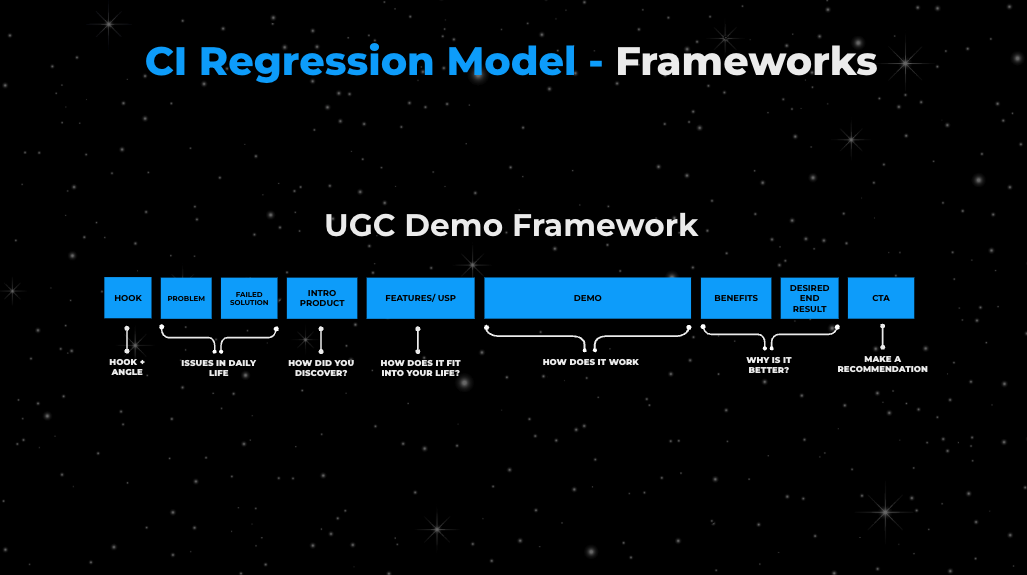The 8 Critical Variables That Turn Video Ads into Million-Dollar Winners
Discover the 8 most important video ad variables from $100M+ in ad spend. Learn what makes winning UGC video ads scale from brands spending
We all love success stories. Those big wins and secret formulas that drove someone's breakthrough. But what about the failures? The costly mistakes that taught the hardest lessons?
After spending over $100 million on video ads and working with brands that spend between $500,000 and $10 million monthly on paid social, we've discovered something crucial. The ads that fail are just as important as the ones that drive millions in revenue. And from those failures emerged 8 critical variables that predict whether your video ad will crush it or crash and burn.
Here's what most brands get wrong: they think success comes from beautiful high-budget branded content, throwing random ads at the wall, or testing endless UGC creators from online marketplaces. Sure, these methods can work. But they're not the most effective way to scale video ads in 2025.
By the end of this post, you'll know exactly what to avoid in your ads, plus the 8 winning variables that unlock endless scale for your video advertising campaigns.
Why Most Video Ads Fail (And What We Learned From Losing Millions)
Let's be honest. Most brands are bleeding money on video ads that never had a chance.
We regularly audit accounts spending $3,000 to $5,000 behind single ads that are nothing more than organic TikTok trends with no sales angle. Pretty branded videos that look amazing but don't convert. Random creator content with zero strategic direction.
The problem isn't creativity. The problem is the lack of a systematic approach.
After living in accounts since 2019 and creating video ads for companies like Ryze Superfoods (where we produce 150+ unique video ads monthly), we've identified patterns. The winners have specific things in common. So do the losers.
And here's the truth that will save you thousands: the ads that fail teach you just as much as the ones that succeed. When you understand what makes an ad bomb, you can systematically avoid those pitfalls and focus on the 8 variables that actually drive performance.
Variable #1: Direct Response Principles (The Foundation)

Here's something most marketers miss: the core psychological desires that drive people to buy haven't changed in 40+ years.
What has changed? Simply the medium.
We went from print ads (see) to radio commercials (hear) to TV infomercials (see and hear) to consuming short-form video content in the palm of our hands. But the fundamental direct response principles that worked in Claude Hopkins' print ads from the 1920s and TV infomercials still crush it today.
The Most Powerful Direct Response Principles for Video Ads

- LF8 Core Desires - The 8 fundamental human desires that drive all purchasing decisions
- Intensification - Before/after demonstrations and "amazing demos" that prove your claims
- Anchoring - Setting price and value reference points that make your offer irresistible
- Ego Morphing - Helping customers see their ideal self
- Fear Factor - Addressing pain points and consequences of inaction
- Belief Re-ranking - Shifting customer priorities and beliefs
- Problem Framing - Building problem awareness before introducing solutions
- Social Proof - Leveraging customer testimonials and results
Want to dive deeper into these principles? Check out Eugene Schwartz's "Breakthrough Advertising" and Scientific Advertising by Claude Hopkins.
The Sweet Spot: 6-8 Principles Per Ad
Our data across hundreds of winning ads reveals a critical finding: the highest-performing UGC video ads use 6-8 direct response principles in combination.
This creates what we call a "mashup effect" where multiple psychological triggers work together to drive conversions.
Using fewer than 6 principles? You're leaving serious performance on the table.
Using more than 8? Your ad starts feeling "too manufactured" and overly sales-y, which kills the authentic UGC feel.
Real Example: Problem Framing in Action
Let's look at how this works in a real ad for a gut health supplement:
"99% of people are totally unaware of candida and how it leads to weight gain. Candida is a fungus that lives in the gut, and when there's an overgrowth of candida, it will desperately try to survive by making you crave sugar."
Notice what's happening here? We're framing the problem and building problem awareness, curiosity, and fear factor. The goal is to get the prospect saying "yes, yes, yes" and almost be sold on solving the problem before the product is even mentioned.
You don't even know what the product is yet, but if you struggle with sugar cravings or stubborn belly fat, you're already thinking about Candida overgrowth.
That's the power of proper problem framing.
When making bold claims, always provide evidence. Viewers have objections throughout ads, and it's your job to predict those objections and provide evidence that addresses them. Your prospect will take that evidence at face value and continue watching.
For more on creating effective video marketing strategies, visit HubSpot's Video Marketing Resources.
Variable #2: Editing & Post-Production Effects
The difference between a mediocre ad and a high-performer often comes down to editing and post-production. These visual enhancements make complex concepts digestible and keep viewers engaged.
3D Animations and Overlays
.gif)
3D animations are a classic direct response TV technique you've seen countless times. Remember those infomercials showing how a product works inside your body or demonstrating a complex mechanism?
The same principle crushes it in UGC video ads.
Why 3D animations work:
- Show complicated concepts in simple, clear, concise ways
- Add production value without losing the UGC feel
- Provide visual proof of claims (like showing gut microbiome balance)
- Keep attention during explanation-heavy sections
For example, in the Candida ad, 3D animations showed how mushroom coffee fights off candida overgrowth by balancing the gut microbiome. This made a complex biological process instantly understandable.
Green Screen Effects
.gif)
Green screen is an easy way to show a person in completely different settings without actually being there. Lost while traveling? In a lab setting? Reacting to B-roll behind them?
Green screen gives you flexibility while speeding up pacing and keeping viewers' attention locked in.
Speed Manipulation
Here's a lesser-known trick that significantly impacts performance: speeding up your video by 1.25x for younger demographics.
We speed up ads targeting audiences aged 25-35 to match the faster consumption patterns of younger viewers. For audiences 45 and older, we keep the pacing slower and more deliberate.
This simple adjustment can be the difference between someone watching your entire ad or scrolling past at second 5.
Sound Effects and Audio Enhancement
Strategic sound effects emphasize key moments:
- Product reveals
- Before/after transitions
- Important claims or statistics
- Call-to-action moments
Don't underestimate audio. It's half the experience.
Learn more about video editing best practices at Wistia's Video Marketing Guide.
Variable #3: Video Length (The 40-Second Sweet Spot)

After four years and analyzing hundreds of winning ads, we've identified the optimal length for direct response UGC video ads: 40-50 seconds.
This model is based on our top-performing ads across multiple industries and accounts spending $500K+ monthly.
Why 40-50 Seconds?
Long enough to:
- Frame the problem properly
- Introduce the solution
- Provide social proof
- Present the offer
- Include risk reversal
- Drive action with a clear CTA
Short enough to:
- Maintain viewer attention
- Feel native to social platforms
- Avoid the "too long" scroll-past
Controlling Ad Length with Frameworks

How do you predict and control the length of your ad? Use frameworks.
Think of frameworks as templates with predetermined "elements" (2-4 second video segments). Here's an example:
UGC Demo Framework:
- Hook (4 seconds)
- Problem introduction (4 seconds)
- Personal story opening (4 seconds)
- Solution introduction (4 seconds)
- Product features (4 seconds)
- Amazing demo (4 seconds)
- Benefits explanation (4 seconds)
- Social proof (4 seconds)
- Offer presentation (4 seconds)
- Call-to-action (4 seconds)
10 elements × 4 seconds = 40-second ad
This systematic approach ensures your ads hit the optimal length every time without guesswork.
What About Shorter Ads?
Shorter ads (15-25 seconds) are easier to make, but here's the problem: they lack the selling depth needed to scale at high volumes.
An ad might start strong with a good hook, but without proper problem framing, solution presentation, and offer structure, it dies out at low ad spend volumes. The amount of selling you can do in a 45-second format versus a 20-second clip is night and day.
Long ads scale higher. Period.
Variable #4: Number of Actors (Why Single Beats Multiple)

This finding surprised even us: single-actor ads significantly outperform multi-actor ads.
Why? TikTok changed everything.
The TikTok Effect
Over the past few years, heavy direct response style ads with 3+ actors went from crushing to kind of crushing to now just not crushing at all.
TikTok trained audiences to expect authentic, single-person content shot on an iPhone. That authentic feel—one person sharing their genuine experience—resonates far more than assembled, multi-person productions.
Single-actor content feels:
- Authentic and genuine
- Like organic content, not an ad
- Trustworthy and relatable
- Native to the platform
Multi-actor content feels:
- Assembled and produced
- Like traditional advertising
- Less trustworthy
- Out of place on social feeds
Variable #5: Ad Composition (B-Roll vs. Face-to-Camera)
This variable alone accounts for about 35% of ad success. Get the composition wrong, and your ad is dead in the water.
The Power of B-Roll Footage
B-roll = any footage showing actions, POV shots, close-ups, or wide shots, typically paired with voiceover rather than someone talking directly to camera.
Our data is crystal clear: ads with more B-roll footage and higher cut rates consistently outperform static face-to-camera content.
In our highest-performing ads, we typically use only 1-2 face-to-camera clips, with the rest being action-focused B-roll paired with voiceover.
Why B-Roll Crushes Face-to-Camera
B-roll footage:
- Speeds up pacing in the video
- Keeps viewers' attention engaged
- Shows rather than tells
- Demonstrates product benefits visually
- Feels more like content than advertising
Static face-to-camera content:
- Can feel like a lecture
- Loses attention quickly
- Limits visual variety
- Feels more like traditional ads
Industry-Specific B-Roll Applications
Beauty & Skincare UGC Video Ads:
- Texture close-ups showing product application
- Before/after skin comparisons
- Morning/evening routine sequences
- Product packaging reveals
Fashion UGC Campaigns:
- Fit and movement demonstrations
- Styling multiple ways
- Detail shots of fabric and construction
- Try-on sequences
Health & Wellness Video Content:
- Product preparation and consumption
- Daily routine integration
- Results demonstrations
- Lifestyle B-roll showing energy/vitality
Fitness Marketing Videos:
- Workout demonstrations
- Transformation visuals
- Energy and performance improvements
- Active lifestyle B-roll
For apparel brands, check out these clothing brand video examples for inspiration.
Variable #6: Visual Hooks (The First 3 Seconds)
If you don't hook viewers in the first 3 seconds, nothing else matters. Your ad is dead.
A strong hook requires both a strong spoken hook AND a strong visual hook working together.
Winning Hook Styles
1. Negative Hooks / Reverse Psychology
"I hate this drink."
This pattern works because it:
- Starts a story immediately
- Taps into trending memes (like "the girl your man tells you not to worry about")
- Builds mystery and curiosity
- Pattern interrupts expectations
2. Secret-Focused Hooks
"What is the actual secret behind eight-figure video ads?"
These hooks tap into our innate desire to "keep up with the Joneses." Everyone wants to know the secret, hack, or revolutionary new thing that gives them an advantage.
Pro tip: Follow with "Well, it's NOT X, Y, or Z..." This predicts what they think the secret is and creates even more curiosity to keep watching.
3. Direct Mental Movies
"If your farts smell terrible, it's because your gut is crying for help."
This hook crushed it by tapping into our senses—specifically the negative connotations with smell. It also broke the taboo barrier (a girl talking about farts), which immediately grabs attention.
Direct mental movies boost the effect of your words by tapping into senses:
- Sight
- Sound
- Smell
- Taste
- Feelings and emotions
4. Yes Questions
Questions that make the prospect immediately think "yes" create engagement and buy-in from the first second.
5. Intrigue Questions
Questions that create curiosity gaps force viewers to keep watching for the answer.
What a Weak Hook Looks Like
Bad example: "People ask me all the time how I'm so healthy when I don't eat that great..."
This fails because:
- No strong visual hook
- Weak spoken hook (too generic)
- No pattern interrupt
- Jumps straight to product with no problem framing
Remember: Strong visual + strong spoken hook = stopping power.
Variable #7: Sales Sequence Elements (The Selling System)
Once you hook someone, you need a structured sales sequence to convert them. Every high-performing ad includes these key elements in the right order.
The Essential Sales Elements
1. Hook (First 3 seconds)
- Attention-grabbing visual and spoken combination
- Pattern interrupt that stops the scroll
2. Problem Framing (Seconds 4-12)
- Build problem awareness
- Create curiosity about the solution
- Tap into fear factor or pain points
- Get them saying "yes, yes, yes"
3. Solution Introduction (Seconds 13-20)
- Present your product as the answer
- Introduce the unique mechanism
- Explain what makes it different
4. Features → Benefits (Seconds 21-28)
- What the product does (features)
- What the customer gets (benefits)
- Show, don't just tell
5. Social Proof (Seconds 29-35)
- Customer testimonials
- Number of satisfied customers
- Results and transformations
- Authority indicators
Social proof adds massive authority to your brand. If you have thousands of customers who love your product or offer, say it and leverage it.
6. Offer Presentation (Seconds 36-42)
- Clear value proposition
- Pricing or special promotion
- Urgency or scarcity when appropriate
7. Risk Reversal (Seconds 43-47)
- Money-back guarantee
- Risk-free trial
- No-questions-asked return policy
Risk reversal makes an irresistible offer truly irresistible. Most brands already have a 30-day return policy but don't frame it correctly. Call it a "30-day money-back guarantee" and watch conversion rates improve.
8. Call-to-Action (Seconds 48-50)
- Clear, specific next step
- Button or link direction
- Urgency reinforcement
The Sequence Matters
You can't just throw these elements in randomly. The order creates a psychological journey that walks prospects from awareness to action.
Learn more about conversion optimization at Unbounce's Conversion Benchmark Report.
Variable #8: Actor Types & Voice (Real vs. AI)
One of the most common questions we get: Should I use real actors or AI voices?
The answer: Both.
Actors vs. Creators (A Critical Distinction)
Actors give you complete control:
- You direct the exact script
- You control the performance
- You maintain the vision from start to finish
- No fighting over creative direction
Creators want creative control:
- They create content their way
- You lose control over framework and angle
- Creative conflicts are common
- "Creators create, marketers sell"
Bottom line: Hire actors, not creators, for direct response UGC video ads.
Real Voices vs. AI Voices
We have plenty of top-performing ads that use AI voices. Don't be afraid to test them.
Best AI voice tools:
- ElevenLabs - Most natural-sounding AI voices (visit ElevenLabs)
- TikTok Voices - Native platform voices that feel authentic
- Arc Ads - Face-to-camera speaking automation (decent but not great)
The Optimal Testing Mix
When creating 10 test ads, we recommend:
- 5 with real actor voices - For warmth and authenticity
- 5 with AI voices - For speed and cost efficiency
This diversity in your testing gives you different styles and helps you discover what resonates with your specific audience.
Real Example: AI Voice Winner
This ad for Cupid's Hypnosis pheromone cologne crushed it with an AI voiceover:
"The moment you realize you haven't had to make the first move in months since you started wearing Cupid's Hypnosis. Before: constantly getting rejected, no attention from women, thinking I was going to die alone. After: women approaching me, landing dates on a weekly basis..."
The before/after format (intensification principle) combined with an AI voice proved you can create top-performing ads without real voice talent.
For more on content creation tools, explore Adobe's Video Creation Resources.
Conclusion: Mastering the 8 Variables for Systematic Success
Here's what we've covered: the 8 critical variables that separate million-dollar winners from costly failures.
Let's recap them one final time:
- Direct Response Principles - Use 6-8 proven psychological triggers per ad
- Editing & Post-Production - Leverage 3D animations, green screen, speed manipulation
- Video Length - Target the 40-50 second sweet spot using frameworks
- Number of Actors - Single-actor ads outperform multi-actor productions
- Ad Composition - 70%+ B-roll footage with minimal face-to-camera
- Visual Hooks - Strong visual + spoken hooks in the first 3 seconds
- Sales Sequence - Complete framework from hook to CTA
- Actor Types & Voice - Mix real voices with AI for optimal testing
These variables aren't theory. They're backed by $100+ million in ad spend data from brands spending $500K to $10 million monthly on paid social.
The Truth About Creative Success
The brands crushing it with UGC video ads aren't necessarily more creative than you. They're just more systematic.
They understand that:
- ✅ Psychology hasn't changed in 40+ years (only the medium)
- ✅ Frameworks eliminate guesswork
- ✅ Single actors feel more authentic than multi-person productions
- ✅ B-roll crushes face-to-camera content
- ✅ 40-50 seconds is the scalability sweet spot
- ✅ Proper sales sequences convert better than pretty visuals
Success isn't about making "viral" content. It's about making profitable content that scales systematically.
The difference between a 10% hit rate and a 50% hit rate isn't luck. It's not even creativity. It's having a systematic approach that applies these 8 variables consistently across every video ad you create.
According to eMarketer's Digital Ad Spending Report, video advertising spending continues to grow at 15%+ annually. Brands that master these 8 variables now will dominate their markets for years to come.
Ready to implement these variables in your video ads? Start by auditing your current content against these 8 criteria, identify your biggest gaps, and systematically improve each variable. The brands achieving 50% hit rates aren't lucky—they're systematic.
Join The Dark Side Of Video Ads

